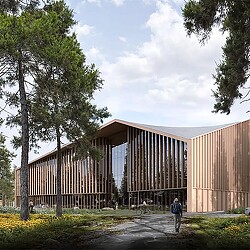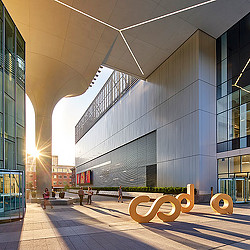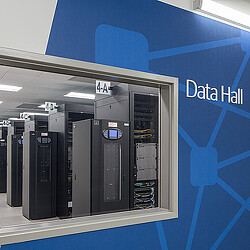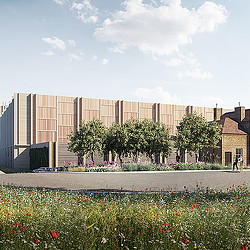Historic Buildings:
A New Solution for
Modern Data Centers
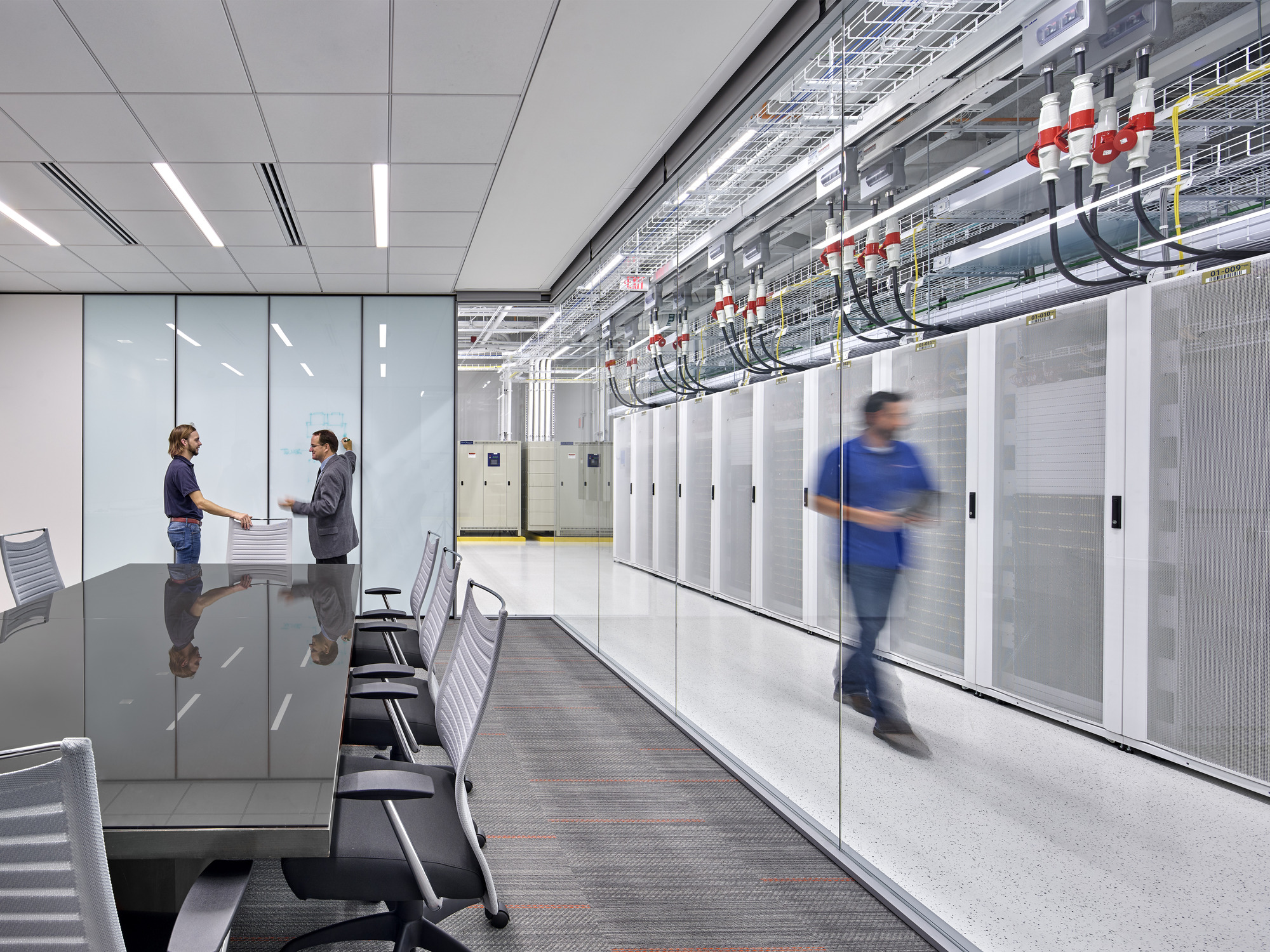
A recent McKinsey study predicts global data center demand could rise between 19% and 22% annually through 2030, with a demand of up to 219 gigawatts. As data demand surges and land becomes scarcer, data center operators are looking to develop new sites in unexpected places. At the same time, cities are looking to breathe new life into vacant or underutilized buildings.
To tackle both issues, one often overlooked solution is gaining traction: repurposing historically significant buildings into data centers. And why not? As cities strive to balance sustainability goals, urban space constraints, and the need for modern digital infrastructure, repurposing existing buildings is a promising solution.
Historic structures have great potential to fill the vacant gap in small towns and large cities. Non-historic spaces are also prime candidates for adaptive reuse, offering a strategic alternative to traditional ground-up construction.
For a building type that some regard as obtrusive, repurposing buildings with architectural character may also solve the overall perception that plagues data center design. Adaptive reuse projects have their share of challenges, but transforming them into data centers has several advantages.
Advantages of Repurposing Historic Buildings
New construction is often associated with speed and cost-efficiency. However, not every data center needs a ground-up approach. For smaller, decentralized needs, edge computing is a viable solution. Edge computing reduces latency and bandwidth usage by processing data locally or at nearby edge servers rather than sending data to a larger central cloud server. This real-time compact solution improves privacy and provides cost savings.
Repurposing any space requires investigating the existing utility capabilities, existing cooling system, readily available electrical infrastructure, and a building ready to carry the structural load of the new equipment. With that in mind, repurposing an existing or historic building may provide better cost savings and a shorter construction timeline than building anew.
Here are some advantages of repurposing existing/historic buildings:
- Urban Location Benefits — Older buildings are typically centrally located within cities, reducing latency and improving network efficiency. An urban central location can provide a city with smart city functions, such as traffic monitoring and Internet of Things (IoT) sensors and cameras.
- Cultural & Aesthetic Value — Preserving historical architecture fosters community engagement and corporate social responsibility (CSR) using existing building stock. The 2018 Commercial Buildings Energy Consumption Survey states that 75% of buildings were built before 2000. According to the National Trust for Historic Preservation, approximately 50 million buildings in the United States are at least 50 years old.
- Structural Integrity — Many historic buildings were constructed with robust materials (e.g., thick stone or reinforced concrete), offering passive natural cooling benefits and enhanced security. Structures built in the 1980s are approaching the 50-year mark required by historic standards, while anything built before 1970 is now eligible for historic designation. That means the robust concrete structures of the Brutalist, Mid-Century Modern, Late, and Post-Modern eras are practical candidates for conversion.
- Sustainability & Circular Economy — Reducing demolition waste immediately benefits the environment by avoiding landfills and extending the lifecycle of existing structures. Paired with realistic green and wellness initiatives, a data center has the potential to be energy- and water-efficient while providing a comfortable working environment for those in the building and nearby.
Challenges & Considerations
Not every building is well-suited to transition from a high-rise office to a high-tech data center. A thorough analysis of existing conditions is critical to avoid performance issues.
- Power & Cooling Limitations — Older buildings weren’t designed for high-density IT loads, often requiring major electrical and HVAC. A large hyperscale data center may use more than 100+MW (megawatts). On the other hand, an edge data center uses far less, generally 1 to 20MW, making it a suitable choice for the limited power and cooling found in most existing buildings.
- Historic Preservation Regulations — Zoning laws and landmark protection ordinances may restrict structural modifications. Often, the placement of new cooling units on rooftops may exceed limiting building height restrictions. This can be avoided with thoughtful, clever design, such as efficiently sized units and line-of-sight studies to reduce utility visibility from the street.
- Structural Adaptation Costs — Retrofitting old buildings can be more expensive than new construction due to floor load limitations, ceiling height constraints, and at times, seismic reinforcement. Careful placement of new structural elements and modular unit implementation can benefit server layout design.
Notable Data Center Trends
- Adaptive Reuse as a Green Strategy — Tech companies are integrating adaptive reuse into sustainability strategies, aligning with carbon reduction goals by avoiding the embodied carbon costs of new construction. As the world grapples with the escalating impacts of climate change, the role of design in reducing carbon emissions has never been more important. The built environment accounts for over 40% of global emissions, underscoring the need for innovative, sustainable approaches that align with a zero-carbon future.
- Integration of Modern Cooling Technologies — Liquid cooling helps manage heat loads without significant structural modifications. District cooling and geothermal solutions are becoming more common in urban settings.
- Micro Data Centers & Edge Computing — Some historic sites are being converted into micro data centers that support edge computing instead of full-scale hyperscale operations, improving latency for local businesses and smart city applications.
- Financial Considerations — While retrofitting costs can exceed those of new construction, they may be offset by tax incentives and grants for historic preservation. Eligible historic buildings may qualify for federal and state historic tax credits. The National Park Service (NPS) reviews 1,200 projects annually, with $6 billion of private investment funds used. Additionally, energy-efficient designs (such as passive cooling) can drive long-term ROI.
The Right Way Forward
Repurposing historic buildings into data centers is a compelling strategy for heritage preservation, sustainability, and digital transformation. While challenges exist, careful planning, advanced cooling solutions, and regulatory compliance can unlock significant benefits.
In our increasingly online and connected world, the network of data centers supporting cloud computing services has become critical infrastructure. Companies and developers that embrace this approach position themselves as industry innovators while contributing to a more sustainable and culturally responsible future.
For media inquiries, email .

